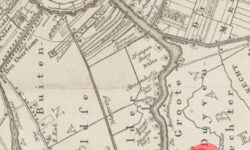De Jonge Entery in Beverwijk

A very local (Dutch) item: the identification of a nursery in Beverwijk. Plus: whether there is a relationship between this ‘young nursery’ and the so called ‘old nursery’ in the same city (but with different owners).
A very local (Dutch) item: the identification of a nursery in Beverwijk. Plus: whether there is a relationship between this ‘young nursery’ and the so called ‘old nursery’ in the same city (but with different owners).









